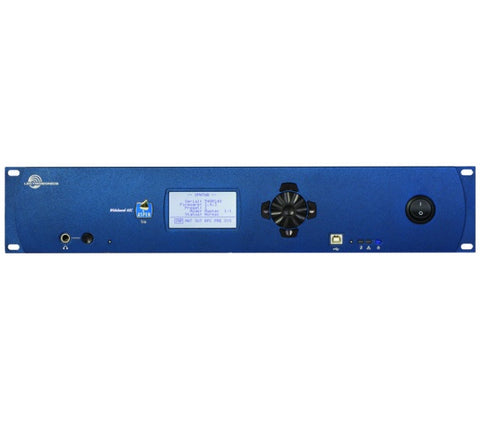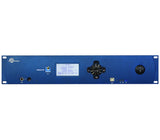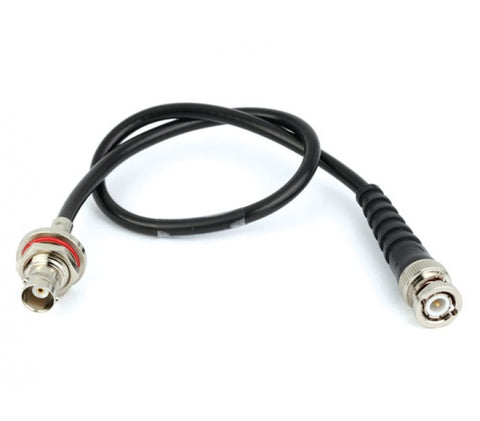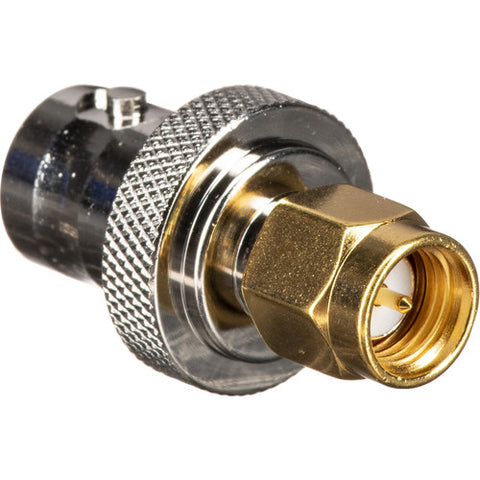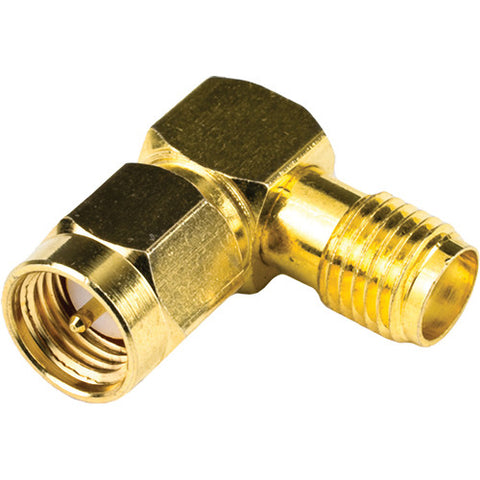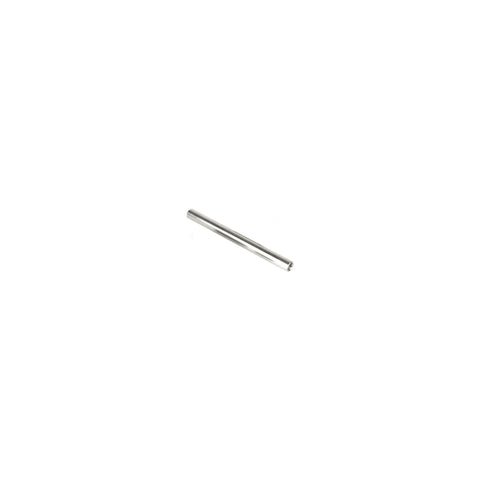Lectrosonics SPNTWB DIGITAL AUDIO PROCESSOR, 8 IN, TEL. HYBRID, PWR AMP, WIDEBAND
Vendor: Lectrosonics
Available

Lectrosonics SPNTWB DIGITAL AUDIO PROCESSOR, 8 IN, TEL. HYBRID, PWR AMP, WIDEBAND
The Lectrosonics SPNTWB is professionally designed capable of providing the boards from the SPN812 and the SPNCWB in a 2RU chassis for providing a complete, stand-alone component for telepresence and audio conference systems. The unit is capable to be used along with additional ASPEN processors for adding additional inputs and outputs. Setup and adjustments are capable to be made with the use of the control panel software or the front panel LCD interface. Inputs and outputs appearing on the LCD have been consolidated into logical groups simplifying navigation.
The far end audio signals in a conference participate in the same manner as local microphones connected to the processor. Three sites connected with the use of two codecs and a telephone line possible to be bridged into a single conference as seamlessly as local microphones.
The ASPEN AEC (acoustic echo canceller) is capable of providing a new and advanced algorithms developed for addressing the need for a single acoustic echo canceller that is capable to handle the challenges of multi-site bridging and an unlimited number of microphones. The AEC converges very quickly, then continues to increase the cancellation depth at every opportunity as a conference continues. Cancellation depth will increase even with brief signal peaks from the far end, and convergence will never be lost with any type of signal or in double talk situations.
The AEC in combination comes along with the patented gain proportional mixing algorithm* is providing outstanding audio quality without echo heard at the far ends.
Signals from the far ends of the conference are routed to the local sound system also to a final mix that is used as a reference signal by the AEC. Audio from the local microphones (which comes including far end audio from the local loudspeakers) is routed to the AEC via a second final mix designed for cancellation of the far end signals. After processing, the output of the AEC is routed back to the far ends through the matrix.
The proprietary noise reduction filter used in ASPEN processors is a third octave dynamic processor which is very effective by the time it is applied to the far end Codec and telephone line signals during the time of poor connections occur.
An ethernet port is provided for setup and control with the use of standard network connections, and an RS-232 port is provided for use along with remote control systems. The design is allowing simultaneous, multi-point third party control.
A two channel power amplifier is included for loudspeakers in the local sound system. The power amplifier is driven by final mix outputs from the matrix and has a full set of signal processing, including parametric EQ, compressor and limiter. Class-D amplification is implemented with a late generation component that provides exceptional efficiency, low heat, excellent audio performance and cannot be damaged by wiring errors.
- Quad-reference Wideband Acoustic Echo Canceller supporting 3-way Bridging
- Two maximum speed grade, 4th generation SHARC® processors*
- Dual Codec interfaces
- TCP/IP Ethernet Addressable
- Fully integrated with ASPEN digital matrix
- Adaptive Proportional Gain Automatic Mixing at the Matrix Crosspoints
- Third Octave Noise Filter on each channel
- Sigma-delta class-D audio power amplifiers
- Built-in 8 in/12 out ASPEN mixer with full signal processing on all inputs and outputs
Mic/Line Inputs: All inputs are digitally programmable-gain microphone to line level differential inputs. Either side can be grounded or left floating. The cable shield shall be connected to ground
Max. input level: 20 dBu
Gain: 0 dB to 56 dB, programmable in 8 dB steps (the analog gain is automatically selected by selecting the input gain)
Input impedance: 8 kΩ differential mode, 2 kΩ common mode
Phantom voltage: 48 V
Dynamic range: 102 dB
EIN: -127 dBu (20Hz – 20kHz, unweighted)
THD + noise: 0.01%
Line Outputs: All outputs are floating transformerless differential outputs. Either side can be grounded or left floating. The cable shield shall be connected to ground.
Nominal level: 0 dBu, channels 1-8, 0 dBu, -20 dBu, -40 dBu, channels 9-12
Headroom: 20 dB
Output impedance: < 50 Ω, all outputs, at all attenuator settings
Dynamic range: 105 dB
THD + noise: 0.01%
Filters: All filters, including the noise reduction filter (NRF), have zero processing delay.
Noise reduction filters: Adjustable 6 to 35 dB on every input
Tone control stages: 4 per input channel
Parametric EQ stages: 8 per output channel
ADFE: 8 per input channel (configurable as Static or Dynamic)
Filter types:
Low Pass: Butterworth (6, 12, 18, 24 dB/octave)
Bessel (6, 12, 18, 24 dB/octave)
Linkwitz-Riley (12, 24 dB/octave)
Additional parameters: frequency [Hz]
High Pass: Butterworth (6, 12, 18, 24 dB/octave)
Bessel (6, 12, 18, 24 dB/octave)
Linkwitz-Riley (12, 24 dB/octave)
Additional parameters: frequency [Hz]
Low Shelving: Butterworth (6, 12, 18, 24 dB/octave)
Bessel (6, 12, 18, 24 dB/octave)
Additional parameters:
frequency [Hz]
boost/cut [dB]
High Shelving: Butterworth (6, 12, 18, 24 dB/octave)
Bessel (6, 12, 18, 24 dB/octave)
Additional parameters:
frequency [Hz]
boost/cut [dB]
Peaking EQ (parametric):
frequency [Hz]
bandwidth [octave]
boost/cut [dB]
Internal Signal Generator:
White noise: level [dBu]
Pink noise: level [dBu]
Tone (sine wave):
level [dBu]
frequency [Hz]
Swept sine:
single sweep
continuous sweep
Sweep Waveform:
sawtooth (up or down)
triangle
Sweep rate:
linear
logarithmic
Sweep Parameters:
start frequency [Hz]
stop frequency [Hz]
level [dBu]
sweep time [sec]
Latency:
Single-board: 64 audio samples = 1.333 ms
System: 1.333 ms (Master) + .125 ms for each Slave board
Example: 2.958 ms for 192 inputs with 48 outputs (system with 2-SPN1624 and 5-SPN32i processors)
Acoustic Echo Canceller: Centralized, bridgeable for Telepresence
AEC Tail Time: 128 ms tail time - will never diverge, regardless of signal type (i.e. sine wave)
Line EC Tail Time: 48 ms tail time
AEC Bandwidth: 10 kHz
Telephone Hybrid Return Loss: 26 dB + line echo canceller = 45 dB
Audio inputs (Codec):
Gain: -20 dB to +20 dB, programmable in 1 dB steps
Input impedance: 15k ohm (differential); 375k (common)
Connector: 5-pin Phoenix
Audio outputs (Codec): Floating balanced
Nominal level: 0 dBu
Output impedance: 50 Ω
Speaker outputs: (2) 10W, class D, BTL wiring to double power
Mic/line outputs: 1-8 line level (0dBu), 9-12 mic/line level (0, -20, -40dBu)
Input Dynamic Range (Codec): 102 dB (unweighted 20 - 20 kHz)
Output Dynamic Range (Codec): 105 dB (unweighted 20 - 20 kHz)
Audio Performance (Codec): THD + noise: 0.01%
Front Panel Connectors:
• 1/4 inch headphone monitor jack with level control
• Standard USB
Rear Panel Connectors:
Power: IEC 60320 C14
RS-232: DB-9
Ethernet: RJ-45
Programmable Logic I/O: (2) DB-25
ASPEN port: (2) Dual RJ-45
Remote control: Dual RJ-45
Power amp output: 5-pin Phoenix
Mic/Line Inputs/Line Outputs: (12) 5-pin Phoenix
Telephone Set/Line: Dual RJ-11
Proprietary network:
Physical level: LVDS (Low Voltage DIfferential Signal) high speed
Cable type: CAT-6
Transmission speed: 1 Gbps
Programmable control inputs:
Number of inputs: 30
Analog voltage range: 0-5V
Logic input: TTL, LVTTL, CMOS, LVCMOS
Programmable control outputs:
Number of logic outputs: 16
Logic control: active low
Max sink current: 100 mA
Max supply voltage: 40 V
Supply voltage for control I/O: 5 V
Max current: 750 mA
Cabled Remote Controls:
Codec 1: Lectrosonics RCWTH4; RJ-45 jack
Tel: Lectrosonics RCWTH4; RJ-45 jack
Power requirements: 100-240 VAC, 50/60 Hz
Power consumption: 50 Watts
Dimensions:
Faceplate: Standard 19 inch 2RU
Housing (WxHxD): 17.50 x 3.50 x 7.25 inches
Weight: 5.65 lbs. (without AC cord)
 USD
USD EUR
EUR
 AUD
AUD
 GBP
GBP
 JPY
JPY

